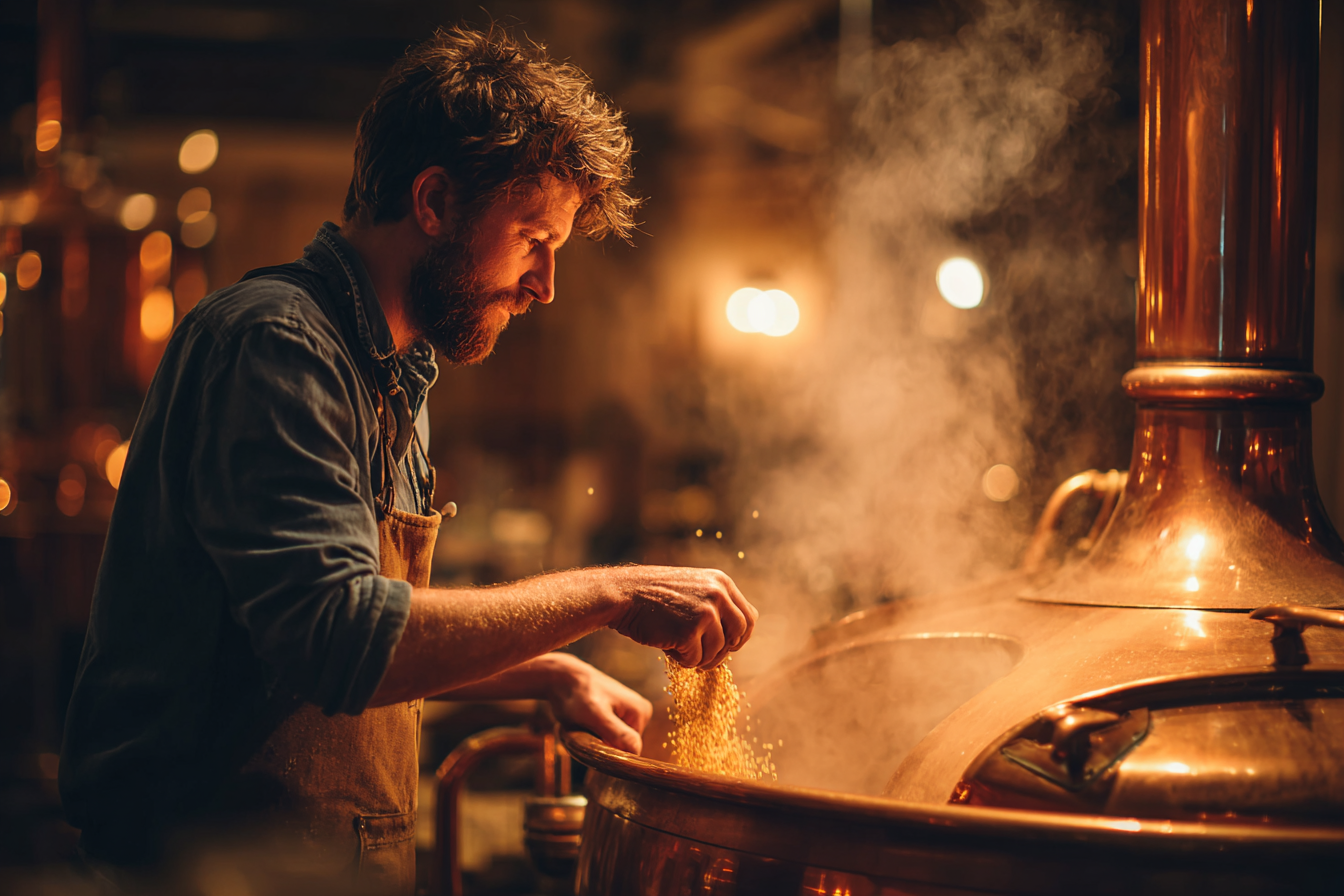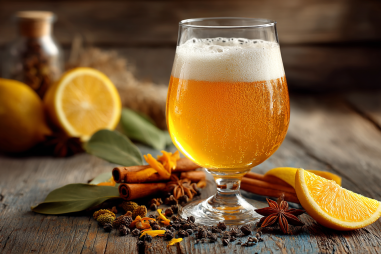American Amber Ale is a beloved craft beer style known for its inviting amber color, balanced maltiness, and approachable hop character. Its rich flavor profile and smooth drinkability make it a favorite among both brewers and beer enthusiasts alike. Undertaking the brewing process of American Amber Ale is a rewarding journey, blending science, art, and tradition to produce that perfect pour. In this guide, we’ll explore each step of the brewing process, focusing on how to select ingredients, balance flavors, and navigate common challenges.
Introduction to American Amber Ale
American Amber Ale sits comfortably in the spectrum of craft beers, offering a middle ground between lighter pale ales and fuller-bodied brown ales. It typically showcases a deep amber to reddish hue, achieved through the use of specialty malts. The flavor is characterized by a noteworthy malt backbone that provides caramel and toffee notes, balanced harmoniously by moderate hop bitterness and aroma. Originating in the craft beer boom of the late 20th century, amber ales reflect an American innovation on traditional English styles, adapting malt and hopping strategies to suit modern tastes.
Key Ingredients in American Amber Ale Brewing
The foundation of any good beer begins with quality ingredients. For American Amber Ale, this means choosing malts, hops, yeast, and water that complement each other perfectly.
- Malt: The malt bill is critical. Pale malt serves as the base, while caramel/crystal malts impart the hallmark amber color and caramel sweetness. Some brewers add small amounts of roasted malts or Munich malt to enhance complexity.
- Hops: American hops known for their piney, citrusy, or floral qualities are preferred. Popular varieties include Cascade, Centennial, and Amarillo. These provide bitterness and aroma that balance the malty richness.
- Yeast: American ale yeast strains are usually clean fermenters, allowing malt and hops to shine without overpowering esters or phenols.
- Water: Water chemistry affects the final flavor. Moderately hard water with balanced mineral content supports both malt sweetness and hop bitterness.
Step-by-Step Guide to the Brewing Process
Brewing American Amber Ale follows a structured process from malt milling to bottling. Here’s a detailed breakdown:
1. Milling the Grains
Begin by crushing the malted barley to expose starches without pulverizing the husks, which can help with lautering later on.
2. Mashing
The crushed grains are mixed with heated water in the mash tun. Maintaining a temperature around 150-154°F (65-68°C) allows enzymes to convert starches into fermentable sugars. This temperature range also promotes the production of dextrins, which contribute to body and mouthfeel.
3. Lautering and Sparging
After mashing, the wort (sweet liquid) is separated from the spent grains through lautering. The grains are rinsed with hot water (sparging) to extract remaining sugars efficiently.
4. Boiling
The wort is then boiled, usually for 60 minutes. This step sterilizes the liquid and facilitates hop additions according to schedule. Early additions contribute bitterness, while late additions and dry hopping add aroma.
5. Cooling and Transfer
Post-boil, the wort is rapidly cooled to yeast pitching temperature (typically 65-70°F or 18-21°C) to prevent contamination and encourage healthy fermentation.
6. Fermentation
Yeast is introduced to convert sugars into alcohol and CO2. American Amber Ale is generally fermented for one to two weeks in this temperature range, allowing clean flavor expression.
7. Conditioning and Packaging
After fermentation, conditioning helps smooth out flavors and carbonate the beer before it’s bottled, kegged, or canned.
Importance of Malt Selection and Caramelization
Malt selection is at the heart of American Amber Ale’s distinctive character. The base pale malt provides the fermentable sugars necessary for alcohol production and a subtle bready sweetness. The addition of caramel or crystal malts is what infuses the beer with its signature amber color and luscious caramel notes. These specialty malts undergo kilning processes that caramelize the sugars inside the grain, leading to a sweet, rich flavor that counterbalances hop bitterness.
Brewers often experiment with the ratio and type of caramel malts, adjusting from light caramel for subtlety to darker versions for deeper color and flavor complexity. Small inclusions of roasted malts can add a mild toastiness or slight coffee notes, but should be used sparingly to avoid overpowering the malt-forward profile.
Role of Hops in Flavor and Aroma
Hops provide the essential bitterness that keeps American Amber Ale balanced and drinkable. Without this counterpoint, the sweet malt character could become cloying. The choice and timing of hop additions shape the beer’s bitterness, flavor, and aroma profile.
American Amber Ales generally use American hop varieties known for their citrus, pine, and floral attributes. Early boil hops contribute to the bitterness, mid-boil additions optimize flavor, and late or post-boil additions maximize aroma. Many brewers also dry hop their amber ales to enhance hop aroma without increasing bitterness.
Achieving harmony between malt sweetness and hop bitterness is a matter of careful recipe formulation and adherence to addition schedules during the boil.
Fermentation Specifics for Amber Ales
Fermentation is where sugars are transformed into alcohol and carbon dioxide, but it’s also critical for flavor development. Selecting the right yeast strain and controlling fermentation temperature ensures the desirable clean and balanced profile typical of American Amber Ale.
A moderate fermentation temperature of roughly 65-70°F helps maintain yeast health and prevents the development of off-flavors like unwanted esters or phenols. Some brewers choose yeast strains studied for their attenuation and flocculation properties to guarantee appropriate dryness and clarity.
Allowing sufficient time for fermentation and a subsequent conditioning phase improves beer stability and flavor refinement.
Common Challenges and Tips in Brewing
Brewing American Amber Ale is accessible but does pose several challenges. Here are some tips for success:
- Balanced malt bill: Avoid adding too much dark malt to prevent harsh roasted flavors and overly dry finish.
- Hop bitterness: Proper measurement and timing of hop additions ensure balanced bitterness. Over-hopping can mask malt flavors, while under-hopping leads to sweetness without counterbalance.
- Temperature control: Keep fermentation temperatures consistent to avoid off-flavors from stressed yeast.
- Water chemistry: If possible, treat brewing water to optimize sulfate and chloride levels, which influence hop sharpness and malt smoothness.
- Sanitation: Meticulous cleaning prevents contamination that can spoil the batch.
Mastering the Art of the Perfect Amber Ale Pour
Crafting a sublime American Amber Ale involves attention to detail at every stage, from choosing the right malts and hops to managing fermentation and conditioning. The result is a versatile beer with a beautiful amber glow, a malt-forward yet balanced flavor, and delightful hop character.
With patience and practice, homebrewers and craft brewers alike can refine their techniques and create amber ales that impress both palates and glasses alike. So gather your ingredients, prepare your equipment, and embark on the rewarding process of brewing this iconic American craft style — the perfect pour awaits.







